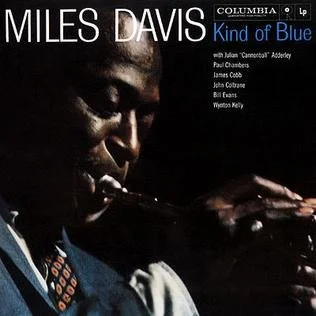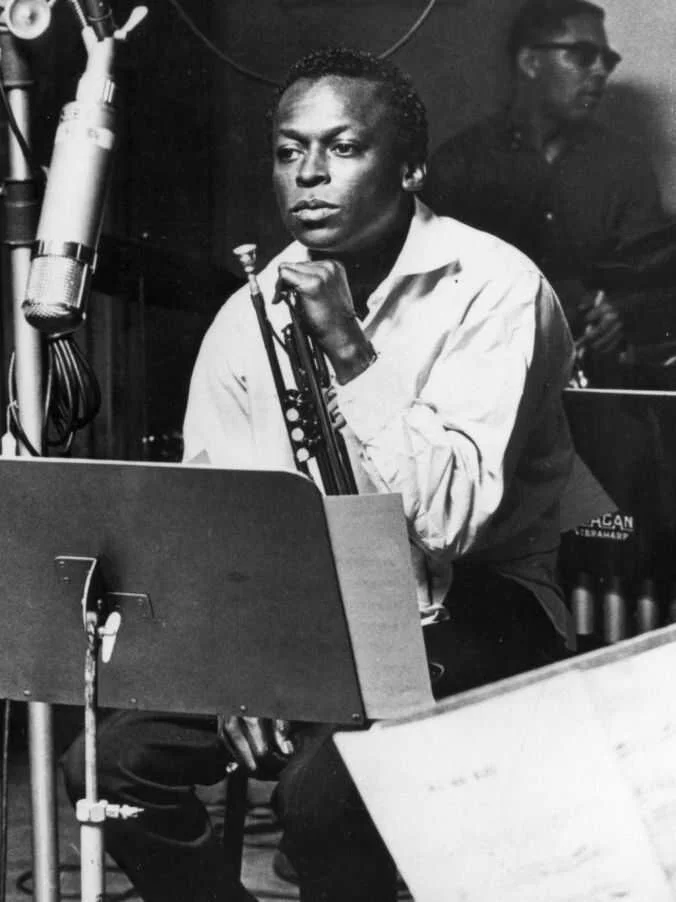Miles Davis - Kind of Blue -
9.8
Miles Davis - Kind of Blue
Miles Davis Crafts the Greatest jazz album of all time
In the annals of music history, some albums transcend time, forever changing the course of a genre. One such record is Miles Davis's "Kind of Blue." Released in 1959, "Kind of Blue" emerged during a pivotal moment in jazz history. Miles Davis, a visionary artist and trumpet virtuoso, assembled an ensemble of exceptional musicians to embark on an audacious musical exploration.
The album's cover art features a photograph by Jay Maisel, depicting a moody and evocative image of a trumpet with a blue-tinted background. The simplicity and elegance of the cover art became iconic and have come to represent the album's essence.
"Kind of Blue" was recorded over two sessions on March 2 and April 22, 1959, at Columbia Records' 30th Street Studio in New York City. The album was produced by Teo Macero and featured Miles Davis on trumpet, John Coltrane on tenor saxophone, Julian "Cannonball" Adderley on alto saxophone, Bill Evans and Wynton Kelly on piano, Paul Chambers on bass, Jimmy Cobb on drums.
Kind of Blue’s iconic track "Freddie Freeloader" was recorded in just one take. The piece features an improvised solo by pianist Wynton Kelly, a last-minute replacement for Bill Evans. This impromptu performance captured the essence of the album's improvisational spirit and contributed to the timeless appeal of "Kind of Blue."
What made "Kind of Blue" a revolutionary milestone was its departure from traditional jazz conventions. Davis and his collaborators embraced modal jazz, a framework built upon scales and modes rather than conventional chord progressions. This departure unleashed a new wave of artistic freedom and expression. The "Kind of Blue" compositions were primarily based on sketches and scales rather than detailed written arrangements. This approach allowed the musicians more freedom for improvisation during the recording sessions.
"Kind of Blue" became a testament to the power of improvisation. The musicians, including luminaries like John Coltrane and Bill Evans, embarked on a spontaneous journey, painting vivid musical landscapes with their instruments. The album's delicate balance of structure and improvisation created an ethereal and introspective soundscape.
Davis's exploration of modal jazz on this record challenged the status quo and inspired generations of musicians to think outside the box. The album's influence reached far beyond the realm of jazz, shaping the very fabric of contemporary music across genres.
The legacy of "Kind of Blue" extends throughout the decades. It remains one of the most celebrated and influential albums in the history of recorded music. It’s timeless beauty and innovative spirit continue to captivate listeners, inviting them into a world of profound emotion and improvisational brilliance.
Its impact can be heard in artists' works across genres, from rock to hip-hop, from classical to electronic. "Kind of Blue" transcends time and genre, leaving an indelible mark on the musical landscape.
Miles Davis's "Kind of Blue" represents a pinnacle of artistic achievement. It pushed the boundaries of jazz, inviting listeners to experience a new sonic landscape. Its enduring legacy is a testament to the profound impact one album can have, forever shaping the course of music history.








